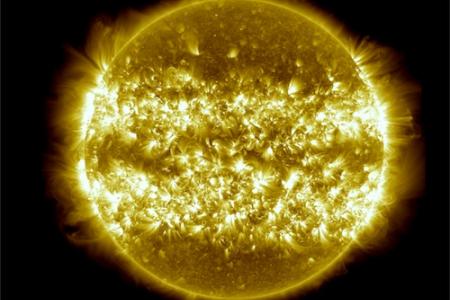Watch three years of sun footage in three minutes
posted Thursday, April 25, 2013 at 1:33 PM EDT

NASA has had its Solar Dynamics Observatory (SDO) trained directly at the Sun for the last three years, providing a steady stream of images since 2010, keeping us informed on the state of our star. Now NASA has compiled all those images into a video, creating a three-minute time lapse from three years of footage.
The film progresses at a speed of two images for each day, each shown for two frames, running at a rate of 29.97fps. The Atmospheric Imaging Assembly (AIA) on the SDO is capable of capturing images from very specific wavelengths from the Sun, allowing us to see specific activity. In this case, the video was created from images shot at 171 Angstroms, which shows the areas of the Sun around 600,000 Kelvin, in the extreme ultravoilet light range.
Towards the end of the video, it splits into four different video feeds at different wavelengths, showing:
"4500 Angstroms, which is basically the visible light view of the sun, and reveals sunspots; light at 193 Angstroms which highlights material at 1 million Kelvin and reveals more of the sun's corona; light at 304 Angstroms which highlights material at around 50,000 Kelvin and shows features in the transition region and chromosphere of the sun; and light at 171 Angstroms."
Even though the SDO is circling the Earth, which is, in turn, circling the Sun, the satellite is still able to keep a remarkably stable view. This has enabled it to provide highly useful information for scientists, especially space weather like coronal mass ejections and solar flares. In fact, at 01:11 in the video below, the largest flare of this solar cycle is recorded.
NASA has released the footage from the video, large images, and recordings at other wavelengths into the public domain. If you find the YouTube clip mesmerizing, there's plenty more where that came from.